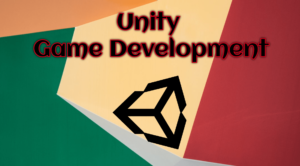Artificial intelligence (AI) is a rapidly growing field in game development, allowing developers to create intelligent and responsive characters that enhance gameplay. Unity is a popular game engine that provides a range of AI tools and techniques to help developers create dynamic and immersive game worlds.
In this comprehensive guide, we will explore advanced AI techniques in Unity, including behavior trees, decision-making algorithms, and neural networks. We will also answer some common questions about Unity AI techniques and provide tips and resources for implementing them in your own game development projects.
Contents
What are behavior trees and how can they be used in Unity? (Unity AI Techniques)
Behavior trees are a type of AI architecture that allows developers to model the behavior of intelligent agents, such as game characters, using a hierarchical structure of decision-making nodes. In Unity, behavior trees can be created and edited using the Behavior Designer plugin, which provides a visual editor for creating and debugging behavior trees. Behavior trees can be used to create a wide range of AI behaviors, from simple actions like moving and attacking to complex decision-making processes like pathfinding and goal-oriented behavior.
What is a decision-making algorithm and how can it be used in Unity? (Unity AI Techniques)
Decision-making algorithms are AI techniques that allow game characters to make decisions based on a set of rules or criteria. In Unity, decision-making algorithms can be implemented using a range of tools and techniques, including state machines, finite state machines, and rule-based systems. These algorithms can be used to create AI behaviors like enemy AI, player AI, and non-playable character (NPC) AI.
What is a neural network and how can it be used in Unity?
A neural network is a type of machine learning algorithm that allows developers to create intelligent and adaptive AI behaviors. In Unity, neural networks can be implemented using plugins like Tensorflow, which provides a range of tools and techniques for training and deploying neural networks. Neural networks can be used to create a wide range of AI behaviors, from simple tasks like object recognition to complex tasks like natural language processing and predictive modeling.
What are some tips for implementing advanced AI techniques in Unity?
Implementing advanced AI techniques in Unity can be challenging, but there are several tips and resources that can help. First, start with simple behaviors and gradually add complexity as you become more comfortable with the tools and techniques. Second, use the Unity Asset Store to find plugins and tools that can help you implement advanced AI techniques more easily. Finally, be sure to take advantage of online resources like Unity forums, tutorials, and documentation to help you troubleshoot problems and learn new techniques.
Conclusion:
Advanced AI techniques are essential for creating immersive and dynamic game worlds, and Unity provides a range of tools and techniques for implementing them. By understanding the basics of behavior trees, decision-making algorithms, and neural networks, developers can create intelligent and responsive game characters that enhance the gameplay experience. With the tips and resources provided in this guide, you can start implementing advanced AI techniques in your own game development projects today.

